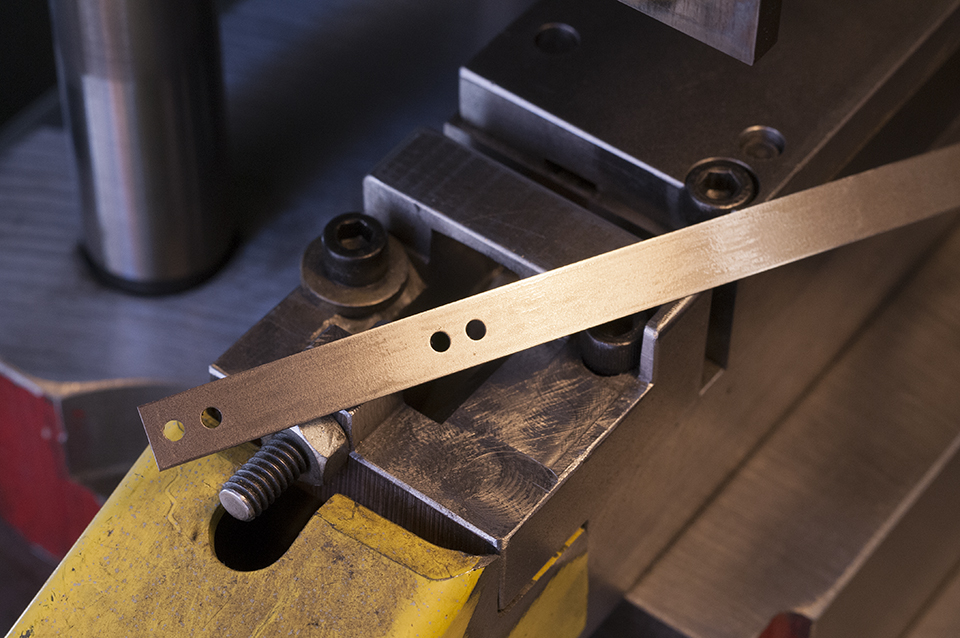You can’t easily see the difference between a $500 riflescope and a $2500 model. But ultimately, you’ll see the difference.
At most of the annual hunting and shooting shows attended by high-end manufacturers exhibiting their wares, there is a phenomenon known as “the whistler.” This refers to the old boy that wanders up to a booth, inspects one of the products on display, and inquires, “How much is one ‘o them things?”
When given the answer, his eyes widen, he purses his lips and emits a long whistle, or perhaps a “hoooooeeee,” quickly puts down the item he was admiring as if it suddenly began burning his fingers, and stealthily backs away into the crowd as if he were confronted by a rabid dog.
Whistlers are especially common these days at riflescope displays, as the cost of premium optics is reaching well into four figures. You can’t blame the old boy for a bit of sticker shock. After all, the scope company just down the aisle is offering the greatest riflescope ever invented for $129.95, fresh off the boat from China and made with the finest multicoated Coke bottle lenses. Just buy one of those, their advertising claims, and you will instantly become an accomplished sniper capable of drilling a fly at 1000 yards.
We’ve all whistled a bit, I’ll wager, when looking at the prices of top-end riflescopes. $1000, $2000, even $3000 or more is not unusual at all these days for premium optics. The problem is, from the outside, every riflescope looks about the same…a black tube with a couple of dials attached, with some glass at each end. What makes one scope require a second mortgage, while another can be purchased with little more than pocket change? Is there really that much of a difference?
The short answer is yes. The longer answer is more involved. For just like a bottle of Scotch, a computer, a fine watch, or even a human being, with riflescopes, it’s what’s inside that counts.
Certainly, the quality of the glass inside a riflescope is a major consideration. That, though, is a topic unto itself for another day. About the last thing anyone thinks about when investing in a riflescope is the hardware store of little pieces and parts inside that black tube. The truth of the matter is that those tiny screws, springs and funny-looking components are what determine if your riflescope will perform for a lifetime or two, or self-destruct at the worst possible time.
Not long ago, I had the privilege of touring the Nightforce Optics Inc. manufacturing facility in Orofino, Idaho. I thought I knew a lot about riflescopes. I was wrong. We spent an entire afternoon going through one of their NXS riflescopes, piece by piece, comparing it to competitors’ products. I’ll never look at, or through, a riflescope in the same way again.
A modern variable-power riflescope can have over 100 individual components. The inherent quality of those parts, the precision with which they are machined, and the care with which they are assembled are the primary reasons why a really good scope carries a whistler’s price tag…and why that price is justified.

Rifles and riflescopes are not a marriage made in heaven. The tremendous recoil produced by big bore and magnum calibers is transferred directly to the scope. Your shoulder can testify to the shock they produce. Precision optical instruments require microscopic tolerances, absolutely perfect alignment and delicate components. It is not unlike strapping an impeccably made Swiss watch to a hammer and repeatedly pounding 10-penny nails. Something has to give, and it’s not going to be the hammer.
The only way that marriage is going to survive is if the riflescope is built with the best possible materials, and the best is not cheap. For example, you might have heard the term “repeatability” applied to elevation and windage adjustments. What this means is that if your riflescope is calibrated for ¼ inch adjustments, you want to be certain that one click is precisely ¼ inch the day you take it out of the box and ten years from now. You need to be confident that no matter how many elevation adjustments you’ve made over the years, that it is repeatable — exactly ¼ inch every time — whether it’s below freezing or brutally hot, after thousands of shots, after years of hard use. It also means that your shots must be repeatable…no surprises, no variation in point of impact today, tomorrow, or a decade from now.
This is not something easily accomplished by the scope maker. Metal fatigue, wear and recoil will, over time, cause the elevation and windage adjustments in an average riflescope to become sloppy. That ¼ inch becomes 3/8 inch, then a half inch, then even worse, until making an adjustment becomes a new and different experience every time. That same wear will also cause your rifle to easily stray from zero at the least provocation, with no advance notice.
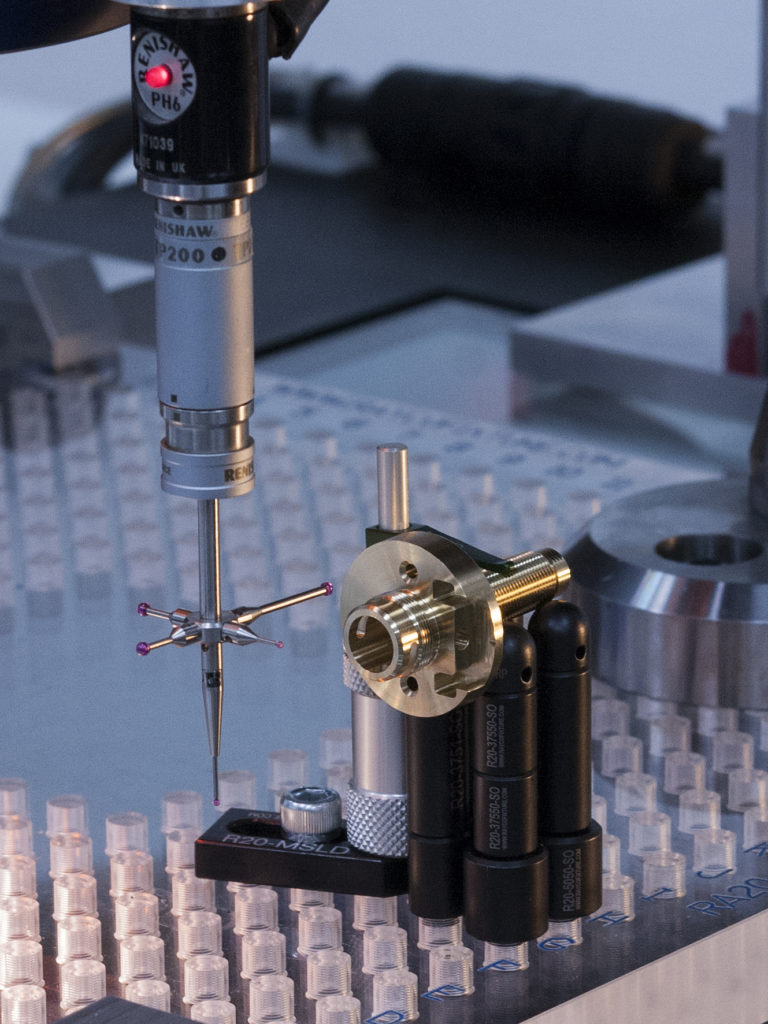
Elevation and windage adjustments are essentially internal screws that move the scope’s erector tube (containing the reticle) up and down and side to side within the scope. This system is held in place, and constant pressure maintained, by two metal leaf springs. The Nightforce people showed me the type of spring common to average-quality riflescopes; it is a simple, thin piece of steel, costing a few pennies.
Then they showed me the springs used in some of their riflescopes. They are pure titanium, cut precisely to length. It spends a couple of weeks in a polishing tumbler before going into a scope, even though it already seems perfectly smooth. This spring costs several dollars. Why go to this trouble and expense? Because titanium, they explained, is the only known metal that can be compressed and held in place for years without developing fatigue or “memory.” It is virtually impervious to wear. It is tumbled to assure that there are no rough spots or burrs to interfere with perfectly smooth operation. It ensures no loss of integrity, and absolute repeatability.
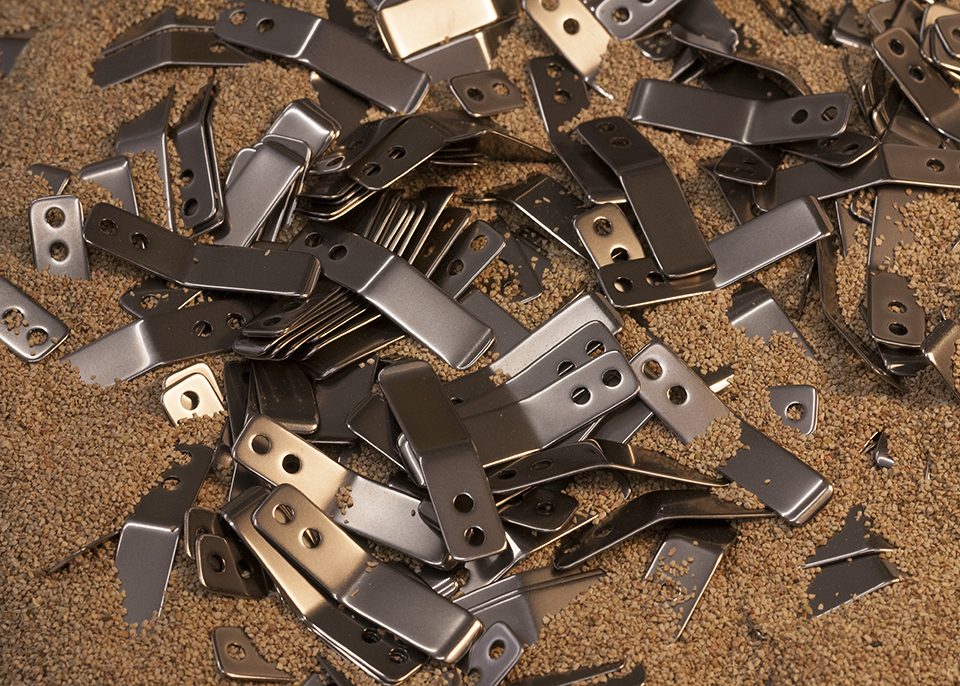
The screws themselves that control the elevation adjustments in Nightforce riflescopes are made of a proprietary alloy, also resistant to wear. The threads are cut with sophisticated CNC machinery to tolerances so fine, so precise, that male and female components must be assembled by hand. No machine is sufficiently accurate. It would be much less expensive to machine coarser threads and assemble everything by automation, as is the case with many riflescopes. But, the price the customer pays is lack of repeatability out of the box, and increased susceptibility to wear.
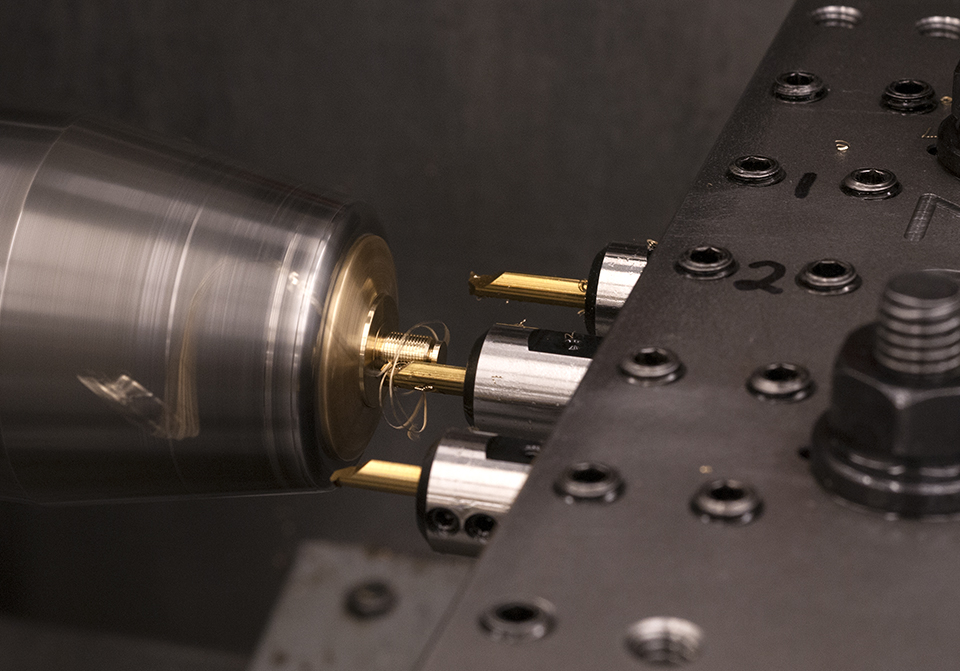
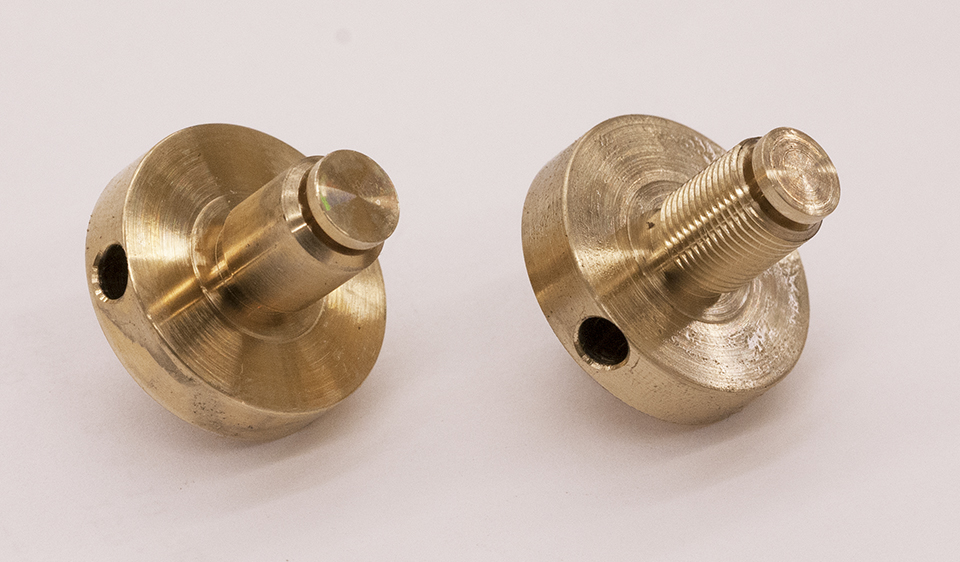

Soft metals that wear are less costly. Hard metals that don’t are expensive. Even the tiny screws that hold a riflescope’s internal components together are critical in the longevity and reliability of your scope. Inexpensive screws with coarse threads work loose and fall victim to repeated recoil. Hearing something rattling in your riflescope is generally not a good sign.
Scope manufacturers and their ad agencies love to sing the praises of the lenses used in their products. Without a doubt, the quality of the glass and its coatings are major contributors to the resolution and clarity you see through a scope. What you don’t hear, though, is about the corners that are often cut in how a manufacturer assembles those lenses.
Just about all riflescope tubes are now made of aluminum. Aluminum and glass react to heat and cold differently, expanding and contracting at different rates. The easy, and inexpensive, way to assemble a riflescope is to simply glue the lenses to the aluminum tube. When such a scope is subjected to extremes of temperature, however, and glass and aluminum go their separate ways, it will easily throw the lenses out of alignment. If you wear glasses, and tilt them forward or backward, you have seen firsthand what this misalignment does to image quality. Changes in expansion rates can also affect your point of impact. In extreme cases, it can affect the seal between glass and tube, allowing moisture to enter, and even result in a broken lens.
So, I asked the Nightforce people, how do you avoid that? Their answer was that Nightforce lenses are bedded by hand, using a proprietary bonding agent between glass and tube that eliminates any direct glass-to-metal contact. The two materials can merrily expand and contract to their heart’s content without affecting each other in the least. Again, it’s not the cheap way. It is, though, the right way.
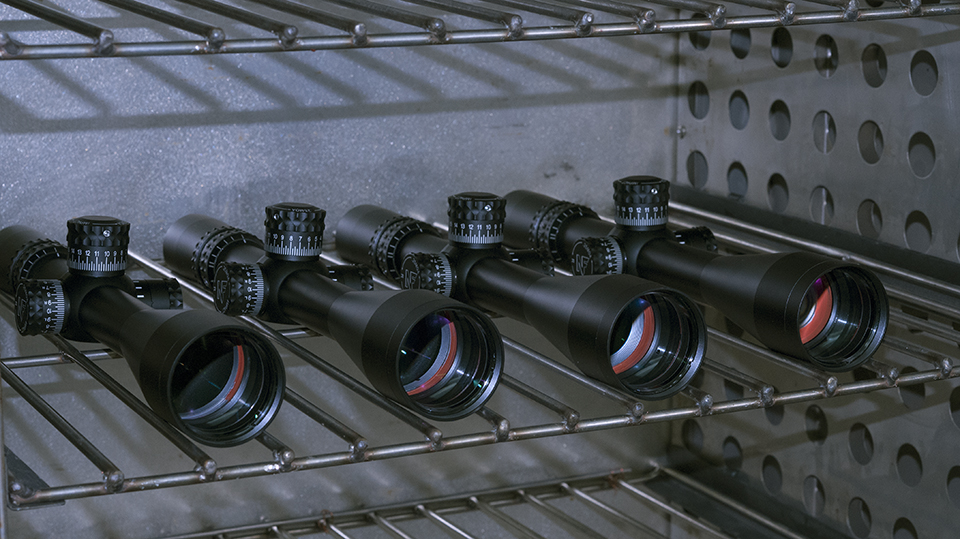 The reddish material you can see here is the proprietary bonding agent used by Nightforce to secure the lenses in their NXS riflescopes. Some manufacturers simply cement the lenses directly to the aluminum, which can result in thermal instability and lack of precision. This photo shows the Nightforce bonding material being heat-cured in an oven.
The reddish material you can see here is the proprietary bonding agent used by Nightforce to secure the lenses in their NXS riflescopes. Some manufacturers simply cement the lenses directly to the aluminum, which can result in thermal instability and lack of precision. This photo shows the Nightforce bonding material being heat-cured in an oven.
In recent years, the hunter has placed increasing emphasis on lightweight gear, from his boots to his pack. Riflescopes have not avoided these market trends. It is one reason the steel tube has all but vanished, replaced by aluminum. But, all aluminum is not created equal. While aluminum tubes are certainly lighter than steel, they are not as resistant to dents, damage and stresses. Inexpensive riflescopes use thin aluminum, allowing their makers to brag about how light they are. Saving a few ounces in aluminum will result in a less costly scope. The hunter will pay a huge price though the first time they accidentally drop their rifle.
“Unfortunately,” a Nightforce engineer told me, “the customer can’t determine the thickness or the quality of the aluminum used when they’re shopping for a scope. The only time they’ll discover it is when they bang their scope against a rock or a tree, and the scope — and their hunt — are both finished.”
Nightforce explained that they prefer to use 6061-T6 aircraft-grade aluminum alloy, machined from solid bar stock, two to three times the thickness of inexpensive tubes. Lesser scopes use extruded or formed aluminum, at a substantial savings in cost — and in strength — compared to bar stock. “It’s possible to build an extremely lightweight riflescope,” the Nightforce technicians told me. “It’s also possible to build an extremely high quality riflescope. It is not physically possible to do both.”

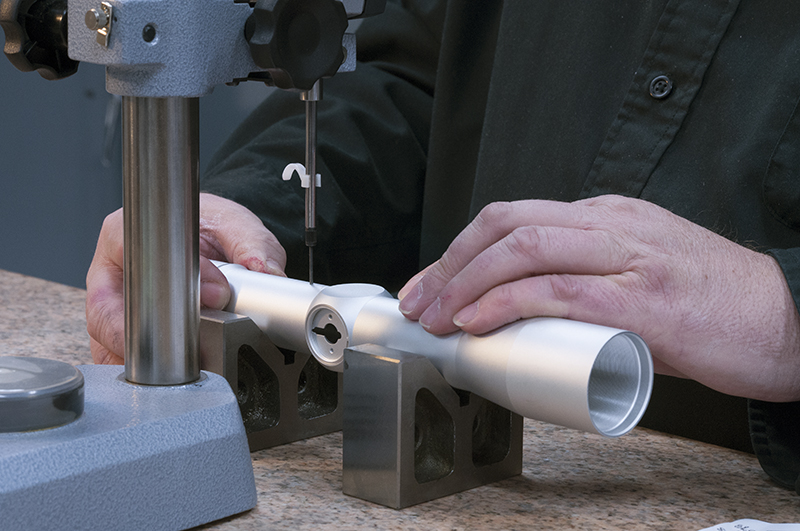
Even mundane things like the quality of lubricants used affect the weatherproofing, smooth operation and longevity of a riflescope. Cheap lubricants can literally freeze in bitter cold, ending any hope of making elevation or magnification adjustments. In extreme heat, they can melt away like butter in a hot pan, putting metal against metal while contaminating internal elements.
During my visit to Nightforce, we literally analyzed every single component of their riflescopes. I was shocked at the cost differential between things like cheap O-rings and good ones, alloys versus cast metals, and skilled handwork versus mass production. I think I even whistled a couple of times. I came away with one basic conclusion: a really good riflescope isn’t cheap to build. Some consumers think there must be a huge profit margin built into a $2000 riflescope, and that simply isn’t true. They’re expensive to buy because they’re expensive to make.
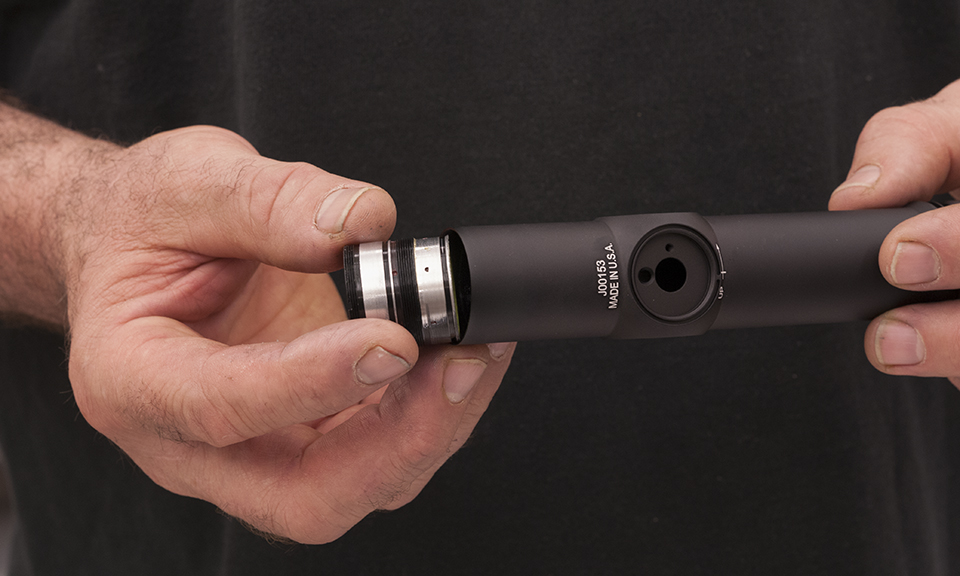
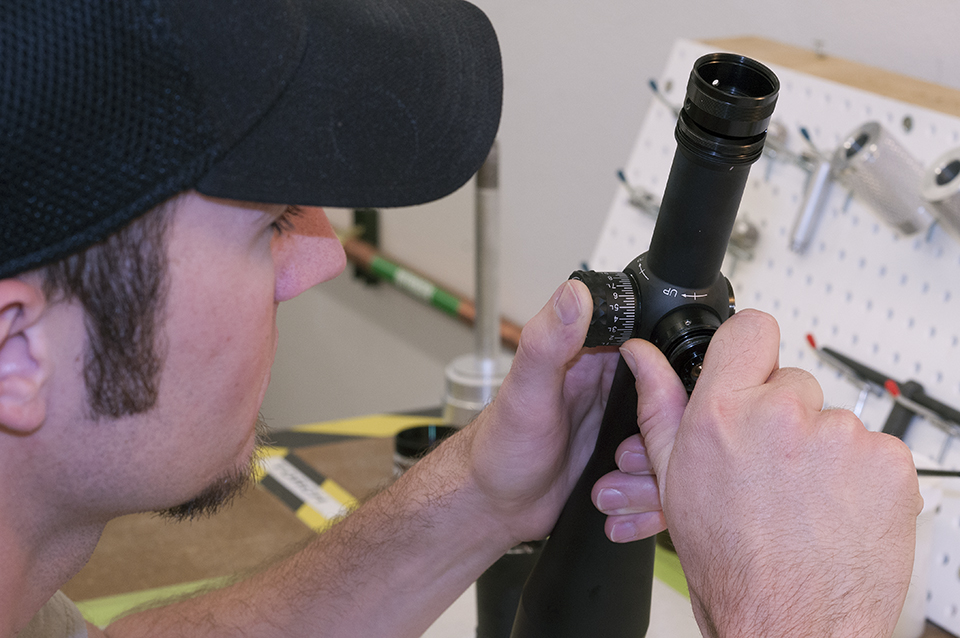
I was once told by a brilliant individual in South Africa, a man who had long ago forgotten more about hunting and shooting than I will ever know, something I will never forget. And I quote, “only a rich man can afford a cheap riflescope.”
He was right. It is much less expensive to buy a good product once than to replace an inferior product many times over. It is beyond my means to pay for “the hunt of a lifetime” more than once in my lifetime because my riflescope caused me to miss a chance at a trophy.
Regardless of advertising claims, there are at present only three or four manufacturers in the world at committed to building the best possible riflescope, regardless of cost. Are they worth it? Probably more than in any other facet of hunting and shooting, with optics, you get what you pay for. Even if most of what you’re paying for, you can’t see.
About the Author:
Tom Bulloch has worked in the optics industry for over 21 years. He has hunted on six continents, doing, as he puts it, “more hunting for less money than any man alive.”
His credentials as a mountain hunter include two ibex, bighorn and Dall sheep, a mountain goat, tahr, chamois, mouflon, and many timberline elk and mule deer. He lives at nearly 9000 feet in the Colorado Rockies, where, he says, “even looking for my car keys is a mountain hunt.”


